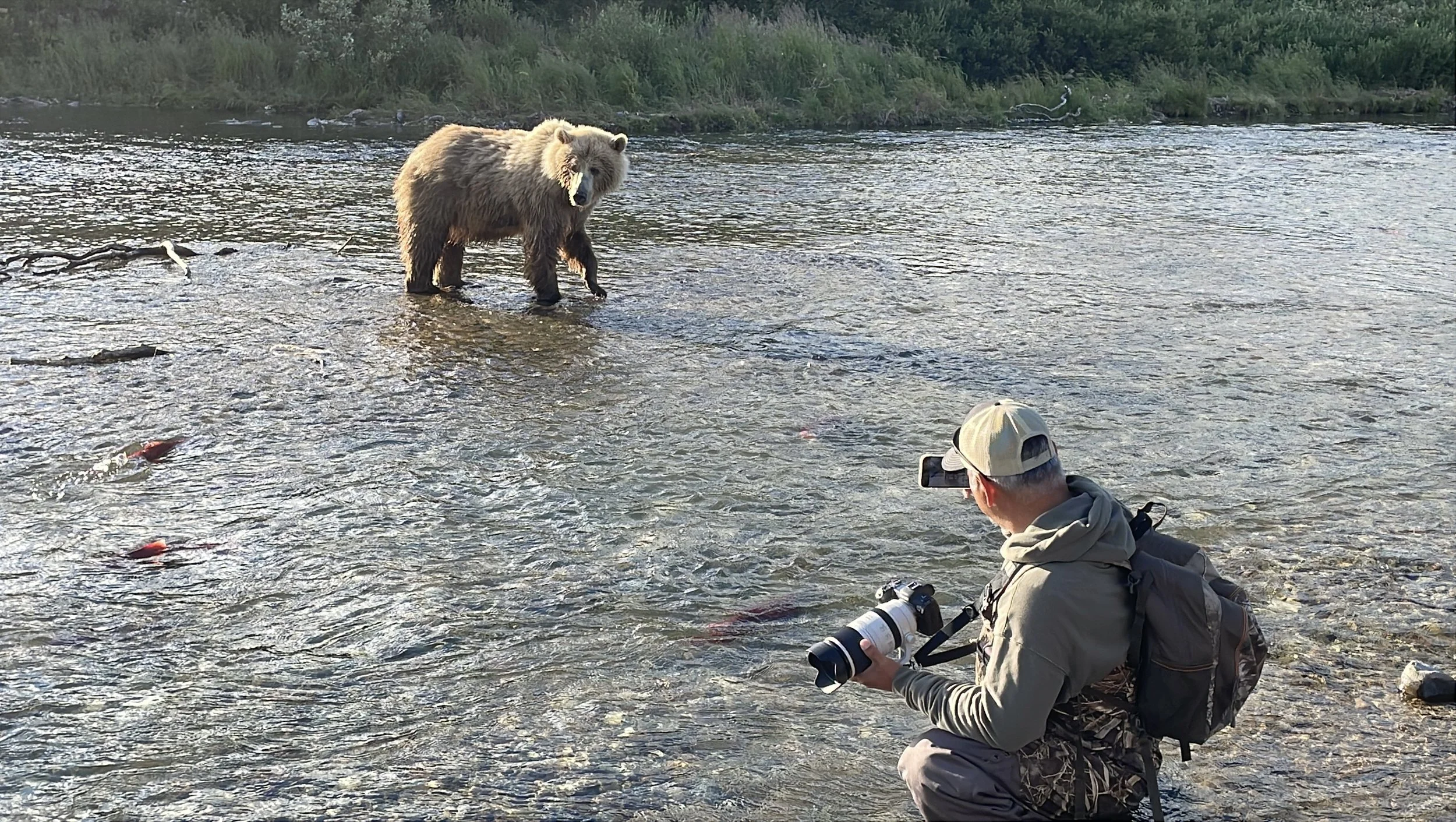Lemon Shark off Tiger Beach. 1/320, f/10, ISO 400
This is Part 10 of a 10 part Natural Light Photography Series.
After exploring the technical aspects of natural light underwater photography, it’s time to reflect on the heart of this approach—the freedom it offers and the deeper connection it fosters with wildlife. For me, shooting with natural light isn’t just a technique; it’s how I experience and capture the underwater world.
Why Natural Light Photography Stands Out
Unlike shooting with strobes, natural light photography offers unparalleled freedom. Without bulky equipment weighing you down, you can move effortlessly through the water, focusing on the experience rather than the gear.
This streamlined approach is especially valuable when freediving, where every ounce of agility and breath hold counts.
But the benefits extend beyond convenience. By using ambient light, you become less intrusive to marine life. Animals aren’t startled by the sudden flash of strobes, allowing you to observe their natural behaviors up close. This creates opportunities to capture moments that feel raw, authentic, and deeply personal.
Brown Pelican and Cormorant off Magdalena Bay, Mexico. 1/400, f/8, ISO 1250
Moments That Matter
Some of my favorite images are those where I’m mere inches away from a shark or dolphin, witnessing their grace and power in a way that feels almost intimate. Natural light photography allows me to stay longer and connect more deeply with these incredible creatures. It’s not just about getting the shot—it’s about sharing a space with wildlife and respecting their world.
Pelagic Thresher Shark off Malapascua Island, Philippines. 1/200, f/5.6, ISO 1600
Of course, there are challenges. Cloudy days, shifting water conditions, and the inherent unpredictability of wildlife can make natural light photography frustrating at times. But those fleeting moments when everything aligns make it all worthwhile.
Keeping It Real
One of the joys of natural light photography is its honesty. It pushes you to embrace the imperfections of the wild—whether it’s less-than-ideal lighting, murky water, or an animal that decides it’s not in the mood to cooperate. These challenges remind me that the underwater world isn’t a curated gallery but a dynamic, living ecosystem.
I also strive to share the full spectrum of my experiences, not just the highlights. Alongside stunning encounters, I document the travel headaches, the days when the animals don’t show up, and the less glamorous aspects of life underwater. These real-world moments add depth to the story and remind us that nature, like photography, is about more than perfection.
Great Hammerhead off Bimini Bahamas. 1/320, f/10, ISO 400.
A Call to Connection and Conservation
Natural light photography isn’t just a way to capture images—it’s a way to inspire. By sharing my work, I hope to remind people that these animals exist, that their homes are worth protecting, and that they deserve to thrive in a world without barriers. Every photo is a chance to spark curiosity, ignite passion, and motivate action for conservation.
Final Thoughts
Natural light photography is about more than technique—it’s about freedom, connection, and storytelling. It’s about embracing the wild, unpredictable beauty of the underwater world and sharing it with others in a way that feels authentic and meaningful. For me, it’s a journey of constant learning and discovery, one that I’m honored to share with you.
Thank you for joining me on this exploration of natural light photography. I hope these blogs have inspired you to experiment with this approach, connect more deeply with wildlife, and find your unique voice as a photographer.
The underwater world is waiting… go capture it.
THIS IS PART 10 OF A 10 PART SERIES.
PART ONE - Is Natural Light Photography Photography For You?
PART TWO - The Euphotic Zone! Your best friend.
PART THREE - Custom White Balance, Natural Lights Secret Weapon.
PART FOUR - Shutter Speed: Freezing Moments Underwater.
PART FIVE - Aperture: Achieving Sharpness and Depth Underwater
PART SIX - ISO: Balancing Light Sensitivity Underwater
PART SEVEN - Focus Points: Keeping Your Subject Sharp Underwater
PART EIGHT - The Histogram: Your Underwater Photography Lifeline
PART NINE - Post-Processing: Bringing Your Underwater Images to Life.








































